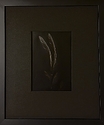I don't doubt that there is a problem, however, I feel compelled to point out as a third party looking at the image you posted, without having the benefit of seeing what you saw through your viewfinder, and not particularly looking for a problem, the first thing I notice is the white flecks that register as dust, and only really after really zooming in and looking extremely closely. Granted, there's enough of them that it would give me pause, especially if I knew I did a good job of cleaning the neg beforehand. I wouldn't be so quick to say it's a backing paper issue though unless it was affecting everything 120 coming out of Ilford. I have occasionally seen similar artifacts like that in the past that went away when I switched to a different developer. I also used to use Kodak fixer (the old fashioned hardening fixer) and that sort of thing popped up more frequently, but since switching to Ilford rapid fixer, haven't really seen that sort of thing. This makes me wonder if it might have something to do with the process being used.











